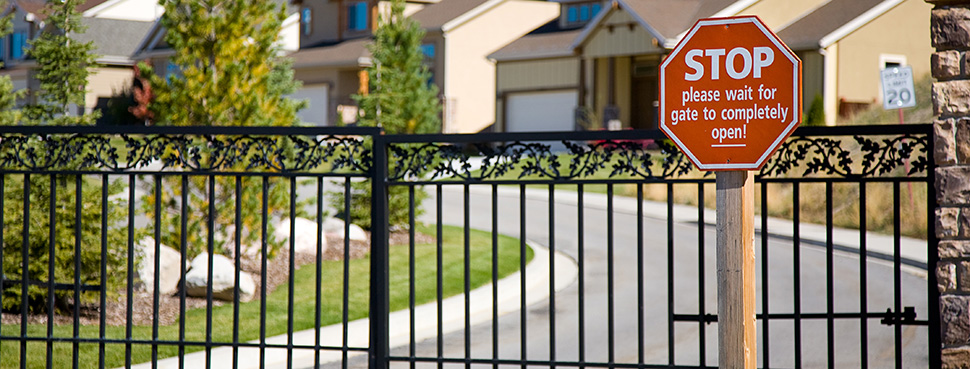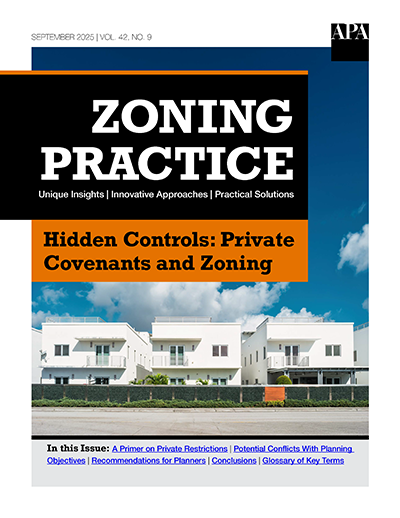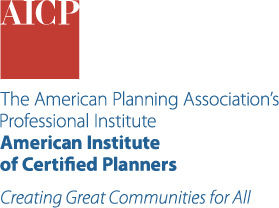Spotlight on Zoning Practice
What Happens When Zoning Meets 'Privatopia'?

It's been more than 30 years since Evan McKenzie coined the term Privatopia to describe the spread of residential owners' associations as rival institutions to local governments. Between 2012 and 2024, the percentage of all U.S. housing subject to private association rules increased from 24 to 34 percent. And by 2024, 65 percent of all new homes completed were in private associations. So, what happens when private land use rules conflict with local zoning reform efforts?
That's the central question Chris Quattro, AICP, PhD, contends with in the September issue of Zoning Practice, "Hidden Controls: Private Covenants and Zoning." While the glib answer is that the private rules usually "win," this doesn't mean that planners have no role to play in reconciling tensions between private controls and public zoning.
Are HOAs Zoning Reform's Achilles Heel?
Imagine that your city has just adopted new zoning regulations that broaden the range of permissible housing types in previously single-family-only districts. Now imagine that nearly all the existing homes in these districts are part of homeowners associations (HOAs) that prohibit accessory dwelling units or multi-unit residences.
According to Quattro, when an HOA rule conflicts with local zoning, the stricter provision generally governs. This means that, in many places, restrictive covenants can severely limit efforts to boost housing supply through zoning reform. The exception is when the stricter rule in question (or that type of rule) is preempted by state law. For example, Washington has explicitly invalidated new HOA rules that prohibit "middle housing" in areas subject to the state's Growth Management Act (HB 1110, 2023).
What Can Planners Do?
Quattro highlights several steps planners can take to minimize conflicts between HOA rules and planning objectives. The first step is to simply get a better handle on the potential extent of the problem by reviewing the covenants that apply to existing large residential developments. Some associations post their rules online. For others, you may need to spot-check deed or plat records to get a sense of how prevalent specific restrictions may be across a jurisdiction.
Next, Quattro recommends verifying the legal status of potential conflicts with your municipal or county attorney before formulating a conflict-management strategy. In some cases, there may be opportunities to engage HOAs or even advocate for targeted reforms to state laws governing owners' associations to bring private covenants into better alignment with local planning objectives.
Subscribe to Zoning Practice

Each issue of Zoning Practice provides practical guidance for planners and land use attorneys engaged in drafting or administering local land use and development regulations. An annual subscription to ZP includes access to the complete archive of previous issues.
Top image: O2O Creative / E+


